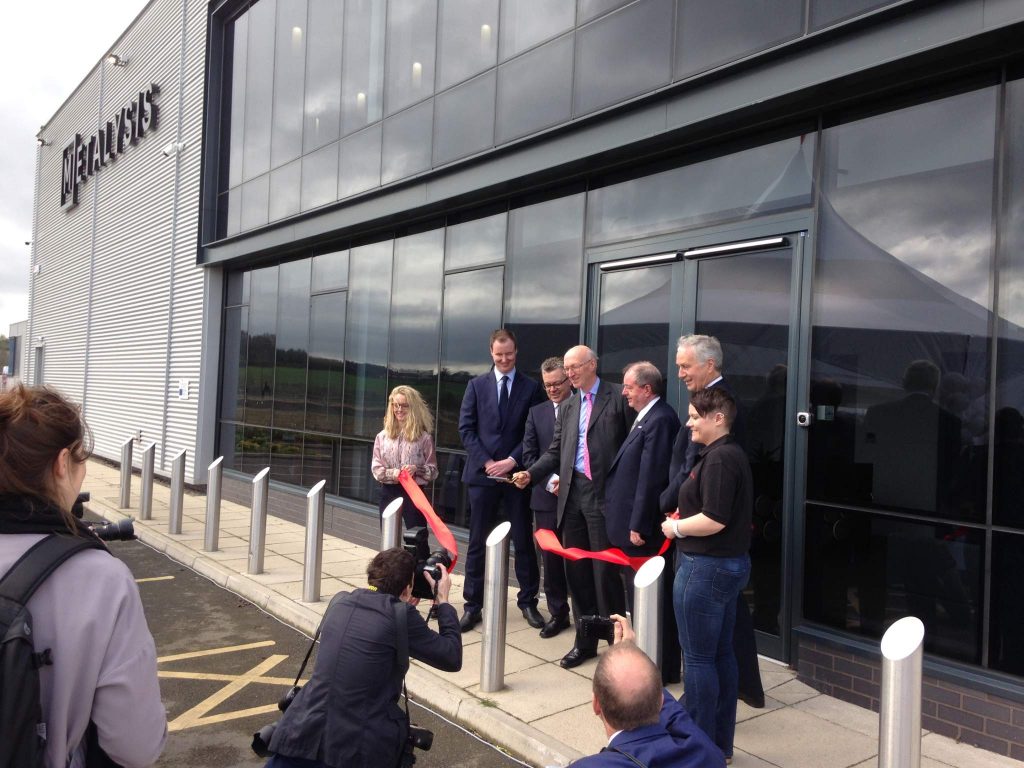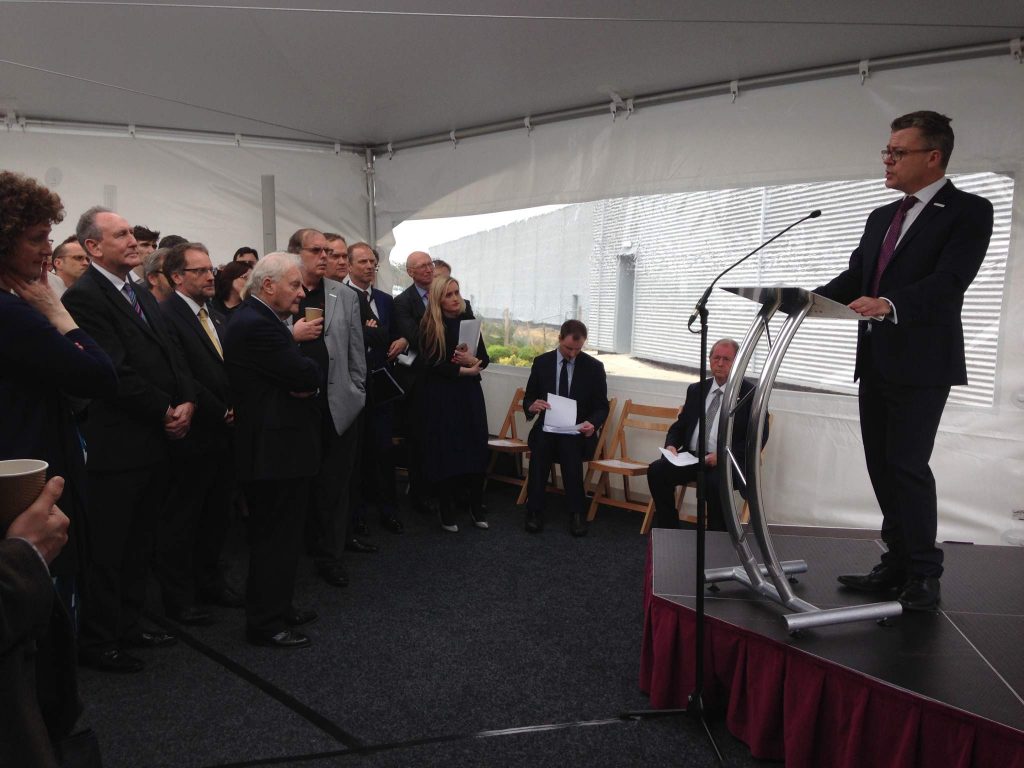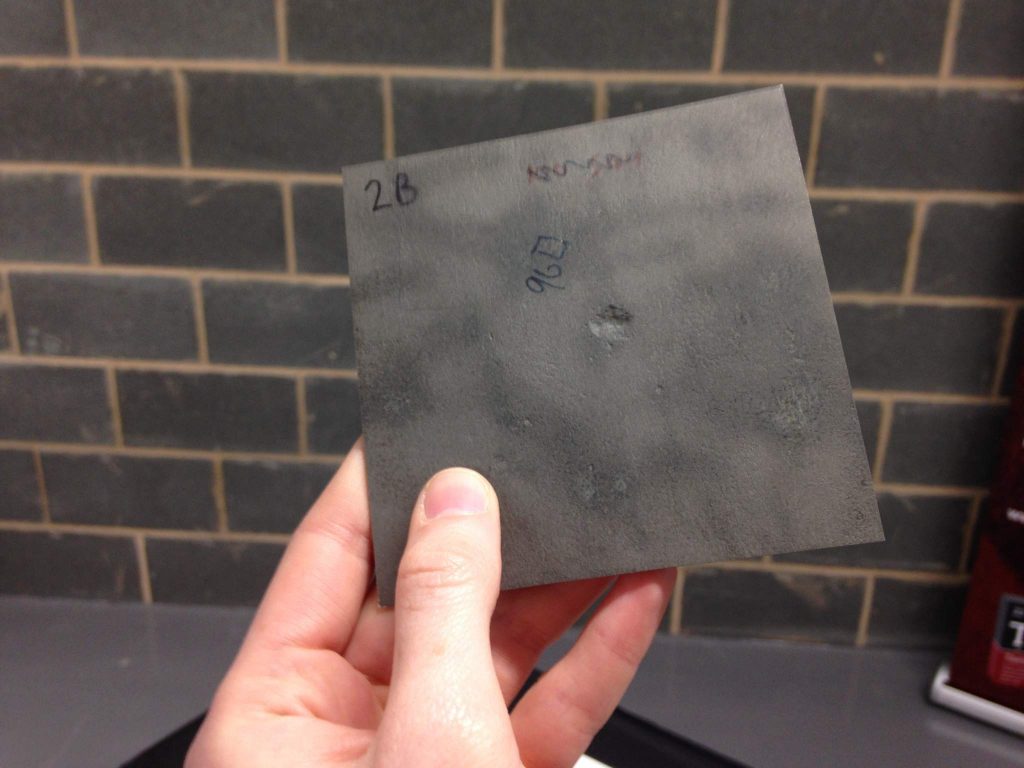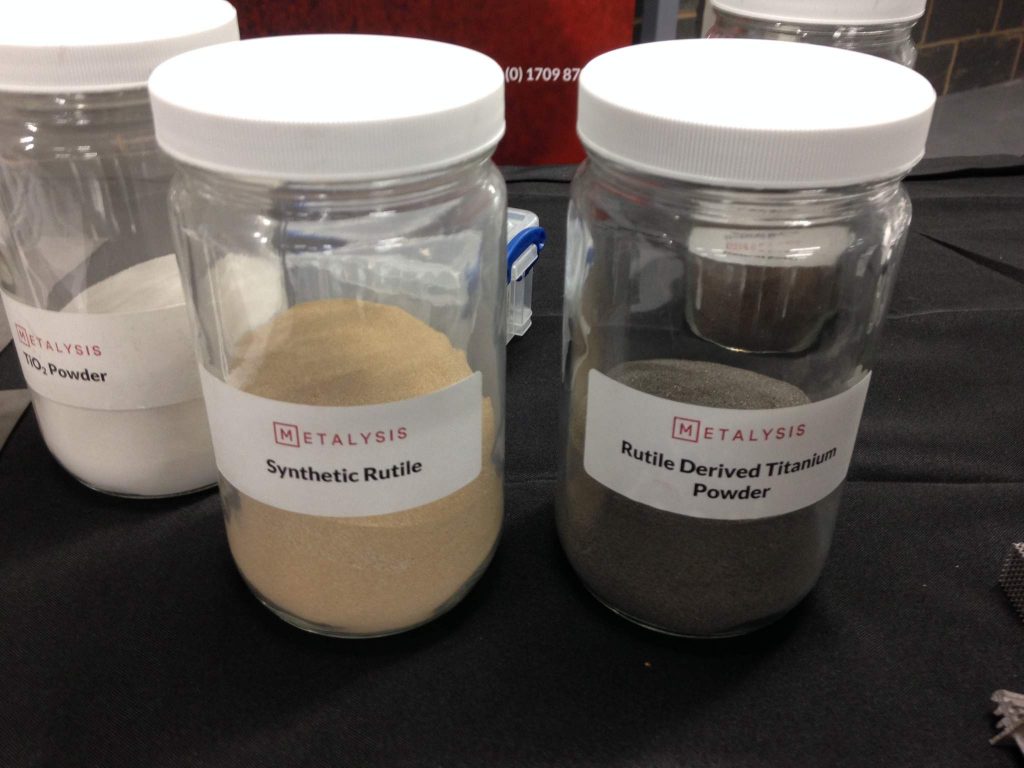Additive manufacturing metal powder manufacturer Metalysis, has opened a Materials Discovery Center in South Yorkshire, UK. A momentous event for the company, Metalysis invited 3D Printing Industry to the ribbon cutting ceremony where the facility was opened by the the company’s CEO, Chairman and British government representatives.
In addition to the ceremony, we were taken for a tour of R&D operations in the facility and given the chance to speak with Metalysis CEO Dion Vaughan.

Douglas Caster is chairman of Metalysis and has a wealth of experience in the manufacturing industry. Caster introduced the opening of the facility with a speech referencing the uncertainties facing British industry due to the government’s exit from the EU. He says,
These are interesting times for British industry with many looking to the UK industrial strategy to provide the answers for our economy in these uncertain times. Metalysis will play its part in those answers by delivering on our firm belief that when public and private sectors work together, with research and academia, we generate positive impacts on productivity and living standards at local, and national, levels.
Caster also went on to add that,
We’re very proud to be a part of the UK’s fourth industrial revolution, and we do so with responsibility and optimism.
Metalysis CEO Dion Vaughan also gave an introductory speech explaining the aims of the facility as,”to undertake contract research and development for big end users who want to define and establish routes to produce exotic metal powders.”
Some of the current focuses include promoting the use of titanium powders in the automotive industry, and development magnetic materials for 3D printing prospected through the company’s partnership with mineral mining company Mkango Resources.

The Future of Solid State Metal Processing
The opening exhibit of Metalysis’ Materials Discovery Center was “The Future of Solid State Metal Processing.”
During this segment of the day, enterprise partners explained how they are working with Metalysis titanium and tantalum metal powders. Renishaw, Safran, and laser additive manufacturing specialists from manufacturing solutions providers TWI were all present.
Still in the stages of fully documenting and understanding the properties of these metal powders, many of the companies and institutions working with Metalysis are investigating the structure of Metalysis powders when 3D printed or rolled.

As Caster highlighted in his opening speech, the University of Sheffield is one institutional partner integral to this process, revealing at the exhibition a forthcoming method of inspecting the internal properties of a 3D printed metal.
Also within walking distance of the Metalysis facility is the University of Sheffield’s reconfigurable Factory 2050, and the Precision Foundry from the UK’s largest manufacturer of steel castings William Cook.
The FFC process
After speaking to exhibitors, visitors were taken in groups of 5 around the Discovery Center’s R&D facility. Here, we were given a taste of Metalysis’ Gen1 and Gen2 states of development. A lab based environment, the facility is primarily to test what materials are producible with the patented Fray, Farthing and Chen (FFC) process from Cambridge University.
3D Printing Industry editor in chief looked further into this patented process in his interview with a Metalysis metallurgist. The key thing to take away about the FFC method is that it extracts metal alloys from oxides rather than the expensive metals themselves. The process is cheaper and more eco-friendly than the existing Kroll method of making powders, and this economic advantage is key to the company’s commercialization of the materials.
Tour of R&D operations
The FFC process is performed by setting up oxide cathodes in a furnace containing molten rutile, which comes as a kind of sand. In the facility, we are shown the setup of titanium oxide cathodes; through to the preparation of the reacting “cells” themselves; the small crucibles used to produce sample amounts of powders; and post processing, where the metal powders are cleaned of salt, then sieved into their respective spherical sizes.

Once sufficiently developed, these materials materials then go on to the company’s sister site in Wath upon Dearne for production of a given amount.
Scalability towards the future
The idea with Metalysis materials production is that the company produces a finished entity that can be installed within a manufacturing facility. Scaling of production is done by “stacking” powder production machines next to one another “like lego blocks in a line”, rather than making bigger machines that produce extra risks to the process.
With a series of developments still to come from Metalysis, 3D Printing Industry will bring you more insight into Materials Discovery Center soon, including an interview with company CEO Dion Vaughan.
To be the first to hear more about Metalysis’ innovative process and visions for the future of manufacturing, sign up to the 3D Printing Industry newsletter and follow our active social media channels.
Featured image shows the opening of the Metalysis Materials Discovery Center. All photos featured in this article were taken by Beau Jackson.



